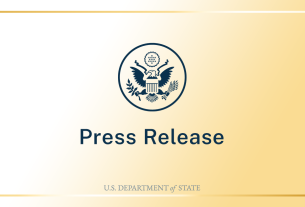Introduction
Trickle-down economics is a theory that suggests policies aimed at benefiting the wealthy, corporations, and high-income earners will eventually result in broader economic benefits for society. Proponents argue that reducing taxes and regulations for businesses and affluent individuals leads to increased investment, job creation, and economic growth, with the benefits eventually “trickling down” to workers and the wider public. This approach was central to the economic policies of former President Donald Trump, whose administration adopted supply-side strategies that incorporated large tax cuts for corporations and high-income earners, alongside deregulation.
This article explores the rationale behind trickle-down economics, its application under Trump’s presidency, its pros and cons, and the potential long-term impacts of such policies. It draws from a variety of economic sources and analyses to provide a comprehensive view.
The Theory of Trickle-Down Economics
Trickle-down economics is rooted in supply-side economics, which emphasizes that lowering taxes and reducing government regulations on businesses and the wealthy will incentivize investment, spur economic growth, and ultimately benefit society as a whole. The theory suggests that when corporations and wealthy individuals have more capital, they are more likely to:
- Invest in new projects and businesses.
- Increase hiring and wages for workers.
- Stimulate innovation, which leads to new products and technologies.
- Generate wealth, which, when spent, boosts demand in the economy.
In practice, the theory suggests that the benefits of these actions will “trickle down” to the rest of society. While this may benefit business owners and executives immediately, the expectation is that workers will benefit as well, either through increased job opportunities, higher wages, or greater overall economic prosperity.
Trump’s Economic Strategy: Tax Cuts and Deregulation
Donald Trump’s economic policy, particularly during his first term, was heavily influenced by trickle-down ideas. The most significant measure was the Tax Cuts and Jobs Act (TCJA) of 2017, which reduced the corporate tax rate from 35% to 21% and lowered taxes for high-income earners. The logic behind these cuts was that they would stimulate investment and economic growth, benefiting all Americans.
In addition to tax cuts, the Trump administration prioritized deregulation, aiming to reduce bureaucratic red tape that business leaders claimed stifled innovation and growth. Key areas for deregulation included environmental protections, financial oversight, and workplace regulations, which were seen as burdens on businesses and job creators.
Trump’s policy agenda included:
- Corporate tax cuts: Reducing the corporate tax rate was intended to make U.S. businesses more competitive globally and encourage firms to repatriate offshore profits.
- Individual tax cuts: While more modest than corporate cuts, reductions in individual income tax rates were designed to boost consumer spending and stimulate the economy.
- Regulatory rollback: Trump’s administration focused on reducing the number and complexity of federal regulations affecting businesses, believing that less regulation would lead to more investment and job creation.
- Trade policies: Trump’s protectionist approach to trade, including tariffs on China and other nations, aimed to bring manufacturing jobs back to the U.S., though it also generated significant controversy and economic uncertainty.
Pros of Trickle-Down Economics: The Arguments for It
1. Economic Growth and Job Creation:
Proponents of trickle-down economics argue that tax cuts for corporations and the wealthy lead to increased investment, which in turn creates jobs. The rationale is that businesses use their additional capital to expand, improve productivity, and hire more workers.
- Evidence: A study by the Tax Foundation in 2017 found that lowering the corporate tax rate could lead to increased GDP growth and higher wages. According to the Tax Foundation, the TCJA was projected to increase the long-term GDP by 1.7% and raise average wages by 1.1%.
2. Incentivizing Entrepreneurship and Innovation:
Trickle-down supporters argue that lower taxes on the wealthy and corporations encourage entrepreneurship and innovation by allowing investors and business owners to retain more of their income, which can be used to start new ventures or fund groundbreaking technologies.
- Example: In Silicon Valley and other tech hubs, high-income individuals and venture capitalists often make significant investments in startups, potentially leading to new technologies, industries, and the creation of thousands of jobs.
3. Global Competitiveness:
By lowering corporate tax rates, Trump’s policies sought to make American companies more competitive on the global stage. This move was especially important in attracting foreign investment and encouraging U.S. companies to repatriate profits held overseas.
- Example: The Tax Cuts and Jobs Act included a provision that allowed companies to repatriate foreign earnings at a reduced tax rate, which proponents argued could lead to investment in U.S.-based infrastructure and jobs.
Cons of Trickle-Down Economics: Criticisms and Challenges
1. Income Inequality:
Critics argue that trickle-down economics exacerbates income inequality by disproportionately benefiting the wealthy and corporations. While the theory promises that wealth will “trickle down,” in practice, the rich often save or invest their tax cuts rather than spending them in ways that benefit lower-income workers.
- Evidence: Studies by economists like Thomas Piketty and Emmanuel Saez have shown that tax cuts for the rich have led to increased wealth concentration at the top, without corresponding benefits to lower-income earners. The Federal Reserve has found that, since the 1980s, the share of income going to the top 1% has grown substantially, while wages for middle- and low-income workers have stagnated.
2. National Debt and Fiscal Deficits:
The Trump administration’s tax cuts were implemented without offsetting cuts in government spending, leading to significant increases in the national deficit and public debt. Critics argue that such deficits are unsustainable in the long term and could lead to higher interest rates and economic instability.
- Example: The Committee for a Responsible Federal Budget projected that the TCJA would add nearly $1.9 trillion to the national debt over a decade, undermining long-term fiscal health.
3. Questionable Impact on Economic Growth:
While the tax cuts initially stimulated the economy, evidence suggests that the long-term effects may be less impactful than predicted. The Congressional Budget Office (CBO) and other independent analysts have pointed out that the economic growth resulting from the tax cuts was weaker than expected, with GDP growth rates falling after the initial burst of activity following the TCJA.
- Data: In 2018, the U.S. economy grew at 2.9%—an impressive figure— but by 2019, it had slowed to just 2.3%, and the COVID-19 pandemic later exacerbated economic challenges.
4. Limited Job Creation in Certain Sectors:
While tax cuts for corporations were intended to stimulate hiring, many businesses used the extra capital for stock buybacks rather than reinvesting in labor or capital projects. This practice, which benefits shareholders rather than workers, limited the job-creating potential of the tax cuts.
- Example: A report by Business Insider in 2019 found that, while companies did buy back stock at record levels after the tax cuts, they did not necessarily increase hiring or wage growth at the same pace.
What Might Work and What Might Not
What Might Work:
- Incentivizing Investment: Corporate tax cuts can work to stimulate investment, particularly if businesses direct those savings toward innovation, technology, and infrastructure projects. The U.S. economy is highly reliant on investment from private sector firms.
- Global Competitiveness: Lowering the corporate tax rate can make U.S. businesses more competitive globally, potentially leading to more job opportunities in certain sectors, such as tech and manufacturing.
What Might Not Work:
- Wage Growth for Workers: Trickle-down economics has not shown a consistent pattern of leading to higher wages for middle- and lower-income workers. The promised “trickle-down” effect often doesn’t reach those at the bottom of the economic ladder.
- Reducing Inequality: The wealthiest individuals and corporations may benefit disproportionately from tax cuts, increasing inequality rather than reducing it. The benefits of such policies have often been concentrated at the top, with little evidence of substantial trickling down.
Conclusion
While trickle-down economics offers a theoretical framework for stimulating economic growth through tax cuts and deregulation, its real-world results have been more mixed. Under Donald Trump’s administration, policies like the Tax Cuts and Jobs Act did stimulate short-term growth but also led to rising income inequality and increased deficits. While some sectors, such as corporations and high-income earners, benefited significantly, the promised trickle-down effects did not fully materialize for the broader population.
For trickle-down economics to be effective, a more targeted approach, focusing on sustainable investment, infrastructure, and equitable growth, might be necessary. Simply cutting taxes for the wealthy and corporations may not be enough to ensure long-term economic prosperity for all.
References for Trickle-Down Economics and Trump’s Policies
Here are some key references and sources that provide detailed analysis and context on trickle-down economics, its application under Donald Trump’s presidency, and its broader economic impacts:
- Tax Cuts and Jobs Act of 2017 (TCJA):
- Congressional Research Service. (2019). The Tax Cuts and Jobs Act: A Brief Overview.
- This report provides an overview of the TCJA, including its tax cuts for corporations and individuals, and its long-term fiscal implications. It offers a balanced view of both the policy’s intended outcomes and its potential challenges.
- Link to report
- Tax Foundation:
- Tax Foundation. (2017). The Tax Cuts and Jobs Act: Summary of the Key Provisions.
- The Tax Foundation analyzed the potential economic impact of the TCJA, estimating that the corporate tax cuts could increase GDP and wages. This source offers insights into the expected effects on the economy, including growth projections.
- Link to article
- Economic Policy Institute (EPI):
- EPI. (2019). The Tax Cuts and Jobs Act: Winners and Losers.
- The EPI provides an analysis of the 2017 tax cuts, focusing on how they disproportionately benefited the wealthy and large corporations, with little evidence of trickle-down effects benefiting workers.
- Link to report
- The Brookings Institution:
- Piketty, T., Saez, E., and Zucman, G. (2018). Distributional National Accounts: Methods and Estimates for the United States. Brookings Papers on Economic Activity.
- This paper by leading economists on income inequality and wealth distribution provides an in-depth analysis of income and wealth trends in the U.S., highlighting the impact of policies like tax cuts on economic inequality.
- Link to Brookings
- Committee for a Responsible Federal Budget (CRFB):
- CRFB. (2019). The Impact of the Tax Cuts and Jobs Act on the Federal Deficit.
- This source provides an analysis of how the TCJA contributed to increasing the federal deficit, outlining both short- and long-term fiscal impacts.
- Link to article
- The Center on Budget and Policy Priorities (CBPP):
- CBPP. (2017). How the Tax Cuts and Jobs Act Would Increase Income Inequality.
- This report analyzes the disproportionate benefits of the tax cuts to the wealthiest Americans and the exacerbation of income inequality as a result.
- Link to article
- Federal Reserve:
- Federal Reserve Economic Data (FRED). (2020). Income and Wealth Distribution in the U.S..
- The FRED database provides comprehensive data on income inequality and wealth distribution trends in the U.S., including data that is crucial for understanding the effects of trickle-down policies.
- Link to FRED
- Business Insider:
- Business Insider. (2019). The Impact of the Tax Cuts: Stock Buybacks and Corporate Profits.
- This article explores how many corporations used the tax cuts for stock buybacks rather than reinvesting in job creation or wage growth, questioning the effectiveness of the TCJA in achieving broader economic benefits.
- Link to article
- Congressional Budget Office (CBO):
- CBO. (2019). The Economic and Budgetary Effects of the 2017 Tax Act.
- The CBO analyzed the economic and fiscal effects of the TCJA, including its impact on GDP growth, the deficit, and income distribution.
- Link to report
- Institute for Policy Studies (IPS):
- IPS. (2018). Billionaire Bonanza: The Forbes 400 and the Rest of Us.
- This report highlights the growing wealth of billionaires in the U.S. and the ways in which the tax cuts benefit the wealthiest individuals, exacerbating economic inequality.
- Link to report
Key Books and Academic Sources
- Piketty, T. (2014). Capital in the Twenty-First Century. Harvard University Press.
- This groundbreaking book on income inequality and wealth distribution provides the theoretical and empirical foundations for understanding how policies like trickle-down economics can exacerbate inequality.
- Krugman, P. (2019). Arguing with Zombies: Economics, Politics, and the Fight for a Better Future. W.W. Norton & Company.
- Nobel laureate Paul Krugman critiques trickle-down economics and its role in U.S. policy, offering a clear explanation of why tax cuts for the wealthy and corporations do not result in broad-based economic prosperity.
- Blinder, A. S. (2018). The Keynesian Revolution and the Future of Economic Theory. MIT Press.
- This book by former Federal Reserve Vice Chairman Alan Blinder discusses economic theory and critiques policies like trickle-down economics, advocating for demand-side solutions over supply-side policies.



